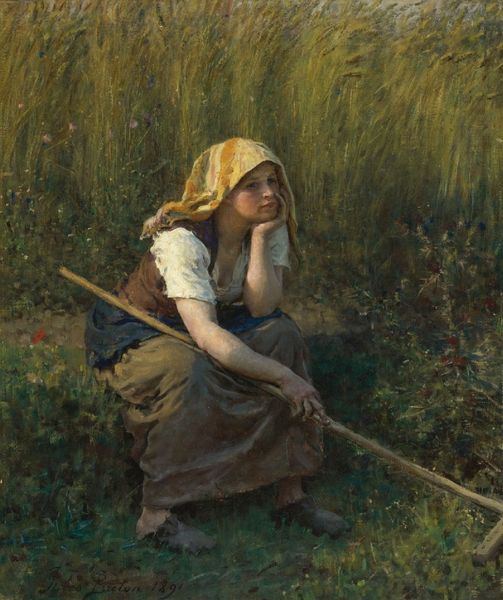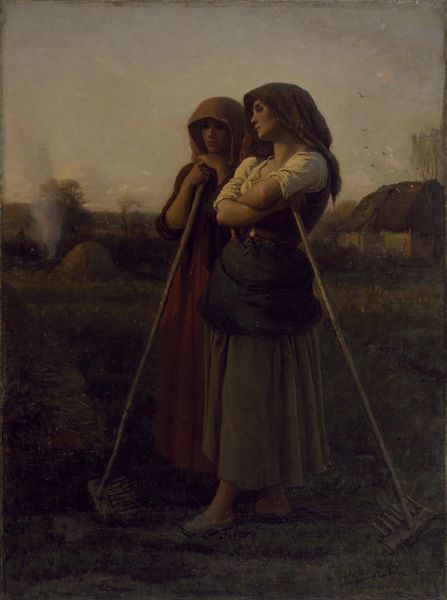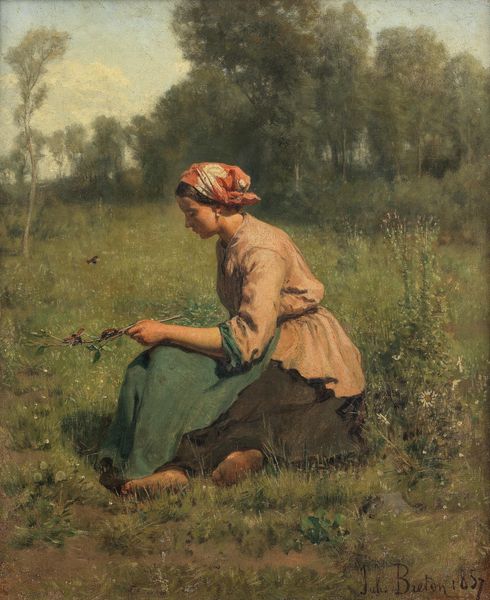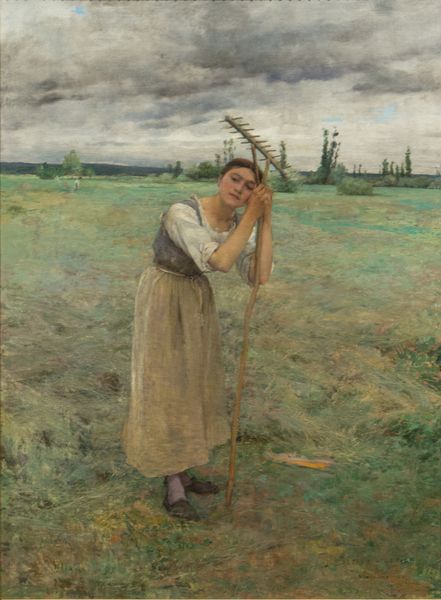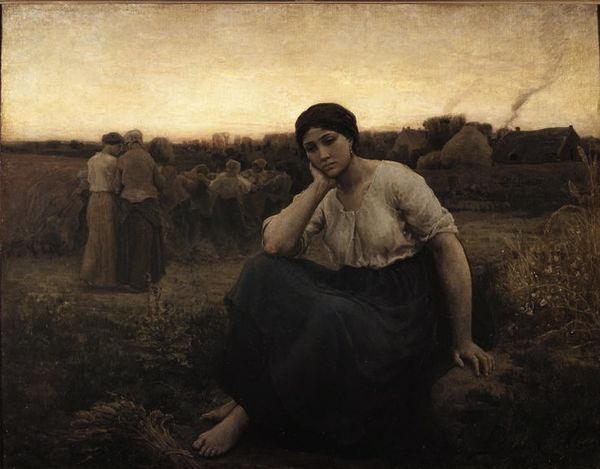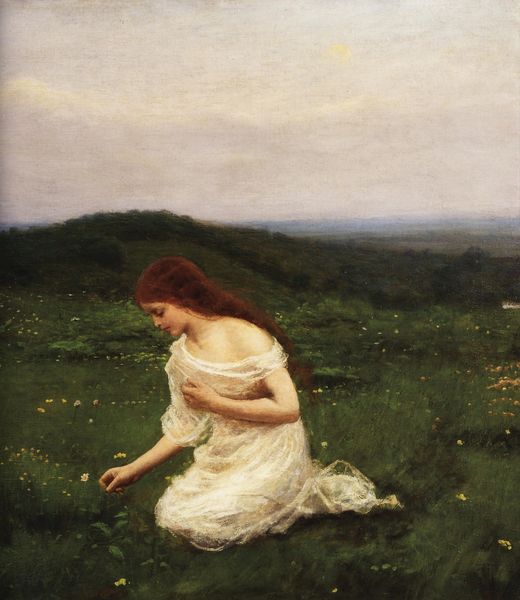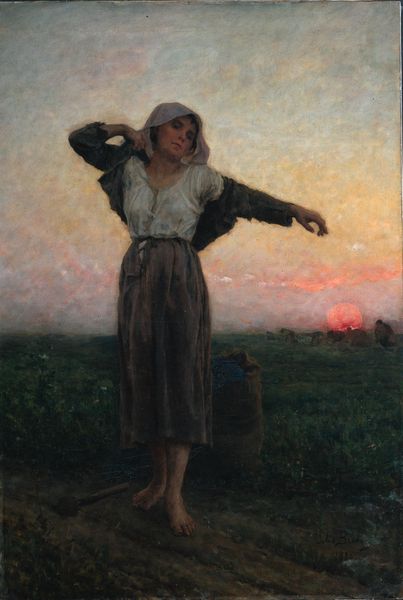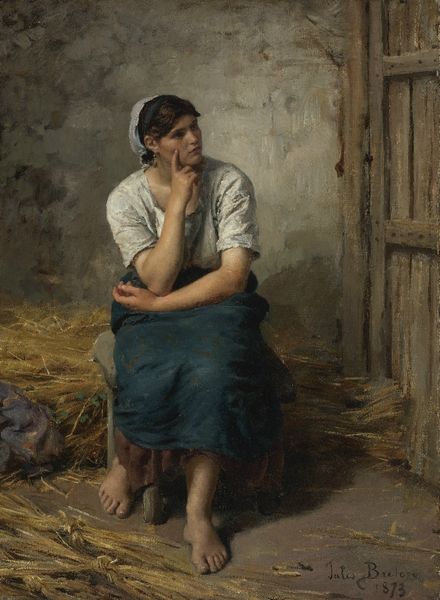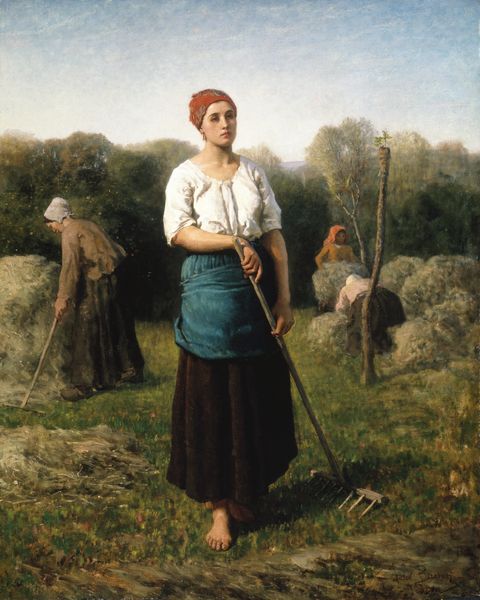
Dimensions: 52.3 x 47.2 cm
Copyright: Public domain
Editor: We’re looking at "Young Peasant Girl with a Hoe" by Jules Breton, painted in 1882. She looks like she's taking a break from her work, and the mood feels somber. What's your interpretation of this piece? Curator: It's a fascinating example of Realism’s intersection with social commentary. Breton depicts the rural working class, but unlike earlier idealized portrayals, he presents a more complex reality. Consider the context: late 19th century France, industrialization is changing rural life. How do you think Breton positions this young woman in relation to those changes? Editor: It's like she is caught between two worlds, isn’t it? Rooted in the land, but also, perhaps, contemplating something beyond it? Curator: Precisely. Her contemplative pose, the way she pauses, suggests more than just physical weariness. It raises questions about her future, her agency within a society undergoing dramatic transformation. It's important to note that artists like Breton contributed to a wider discourse about labor and class identity that challenged established power structures. What elements in the painting support this discourse? Editor: Well, the simple clothing and the hoe show the reality of her daily life and hard labor. I guess it’s a pretty direct way of confronting us with the truth of it. Curator: Indeed. This kind of depiction contributed to a broader shift in how art represented everyday life, inviting viewers to consider the social and economic forces shaping individuals’ destinies. What did you take away from analyzing the art in such way? Editor: Looking at it through that historical lens, the painting is a lot more powerful, seeing that she isn't just a peasant girl; she stands as a testament to the lives and labor of the rural working class during a pivotal period in history. Curator: Exactly, it goes beyond just being aesthetically pleasing and speaks volumes about how art represents the past, and what that tells us about our present.
Comments
No comments
Be the first to comment and join the conversation on the ultimate creative platform.
